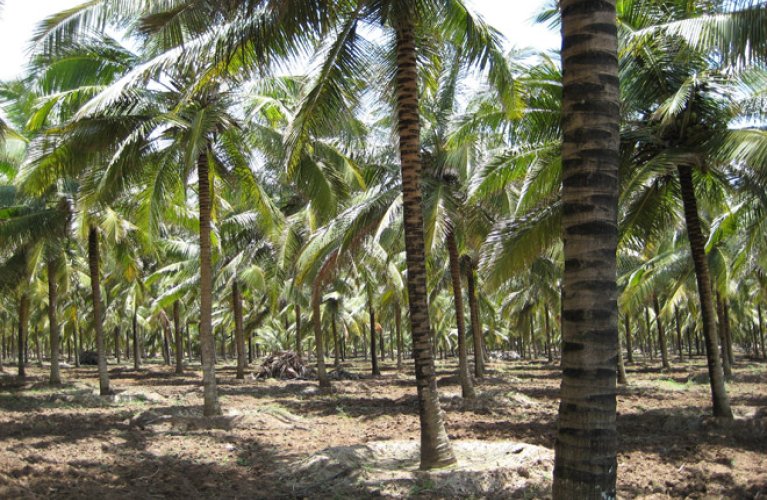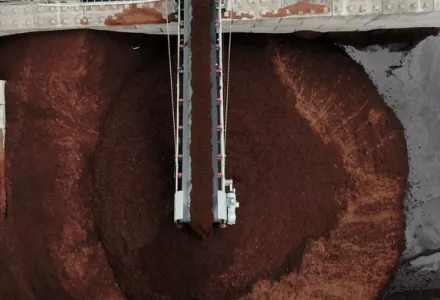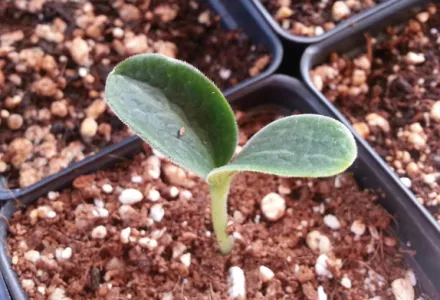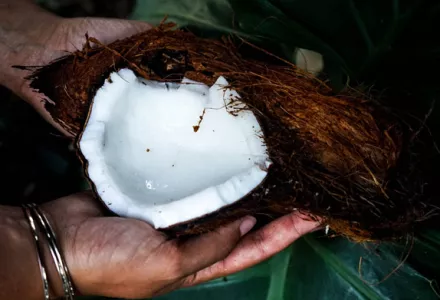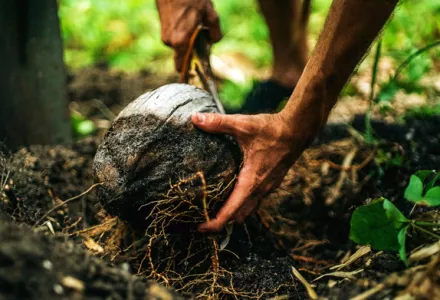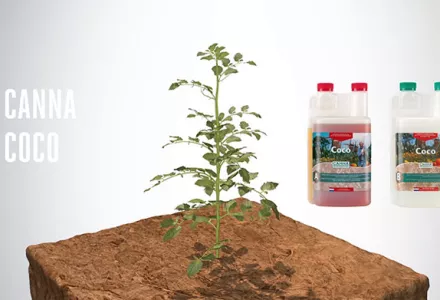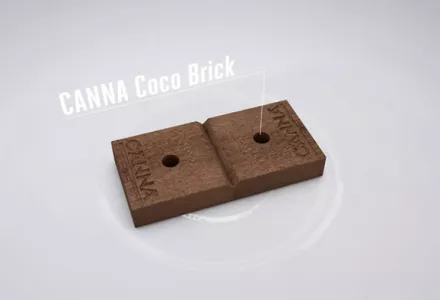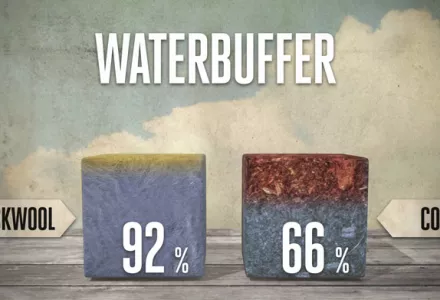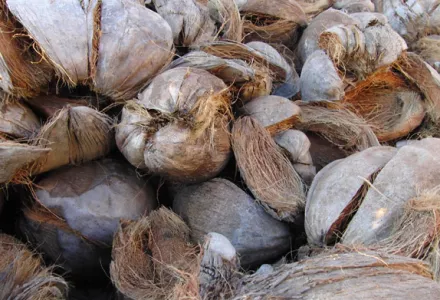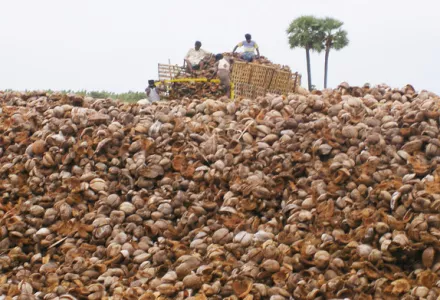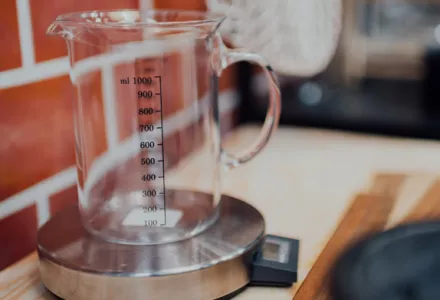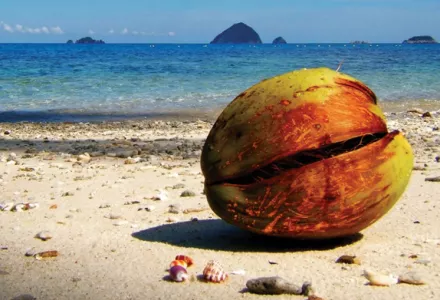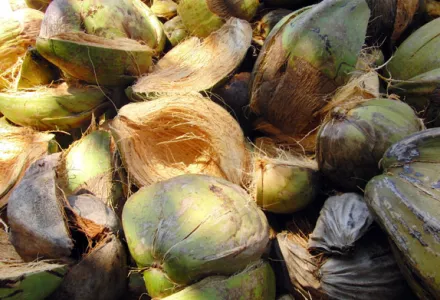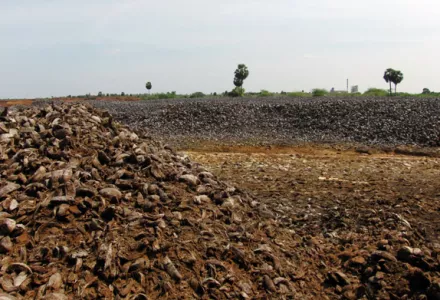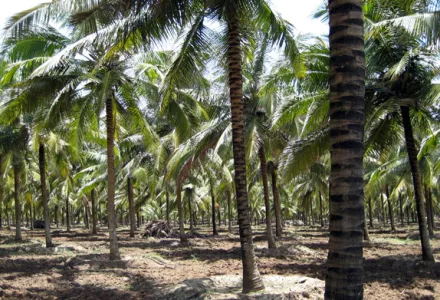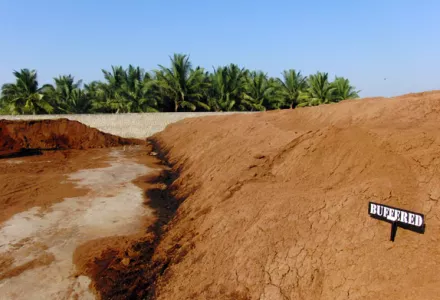This story of the CANNA line of Coco substrate products is not about history. It is about the way the coco is handled, processed and sterilized. It is also about the whys of some of the steps and an understanding of the choices made. It is about putting to bed many of the misunderstandings as a way to begin to understand the product and the great benefit it brings to the market as a true, clean, consistent, and renewable resource.
The Basics
Coconuts are grown in many areas of the tropical world, and have been for thousands of years, and have been utilized as a valuable resource in these areas. And not just for food. Harvested coconuts, which can be harvested green or dried/ brown, are first ground rested for a month as a rule. Then the husk is split open to remove the kernel, the capsule with the coconut 'milk' and the copra or meat. The husks are then ether dried and used for fuel for drying the copra or gathered and soaked, usually in the brackish back waters of the ocean along the coast. This takes 4-12 months in a process known as retting, which is microbiological and loosens the matrix that holds the fibers together. There are other methods such as pit retting, which uses lined pits and fresh water to do the job. Then the fibers are removed yielding 3 things: white fiber, brown fiber, and pith (coco peat). This can also be done mechanically, but this is much harder and costlier.
Once the fibers are removed for other purposes, the balance goes to big piles or is diverted into the production of potting mediums and soil amendments. At first, it is too 'hot' or full of salts and requires copious amounts of rinsing along with a degradation (decomposing) of the material to release enough salts from the tissue to be controllable. This takes a very specific amount of time. Here is where a big deviation in CANNA verses all other coco suppliers occurs. There are two methods from this point forward: the first involves dumping of the material in piles that get very large over time while being rained on and then loaded up. This happens with no concern for aging, and with only rain water assisting in the removal of the excess salts, then washed and bagged and sold. The second takes time and work and a commitment to infrastructure, where the parent material is dried, washed, spread, turned, and repeated. This is the CANNA method.
CANNA basically controls the coconut from harvest through kernel removal through retting in fresh water. Then through proper aging and handling, including 4 months minimum under the full sun which is the primary way the product is sterilized enough for agricultural purposes. Then the material is adjusted for fiber and particle size, treated, then dried and pressed into bricks for shipment to the bagging facilities. They are tested at all stages of the process for the specific chemistry. Then they are reconstituted over about 2 days in big bunkers and lots of water to preserve the structure of the fibers and particle size to maintain the correct physical properties needed to produce a crop. Thereafter it passes a magnet before it is run through a series of screens to break up clumps and to filter out non-coco items. Eventually they are tested and bagged, palletized and shipped to distribution.
Sterility
Potting mediums and soils that are not inert, and this means ALL potting soils, amendments, and mineral soils, are seldom sterilized. Sometimes the components might be, but then these are mixed with other things that are not. It is difficult and costly to sterilize mediums. At least mediums that are not inert, as nitrogen compounds become toxic under heat and the costs near double for the process and no one wants a medium that has been treated with toxins. Sure, pebbles, sand, rocks, and rock wool can be sterilized relatively easy, but then they are put in a bag after running along a conveyer belt and ...well... so much for sterility. Microbes exist all around us. They permeate the air, water, and ground that we work in and on. There is no way a medium will stay sterile. The idea is to insure that the good microbes flourish and the less desirable ones are hindered. Since most of the troublesome microbes are anaerobic, oxygen haters, by putting the medium in an aerated bag or box takes away most of the issues that might develop. For the rest, as long as the material is 'virgin', meaning never had a crop or plants grown in it, then the possible level of any pathogen, microbe or insect, is virtually non-existent. By being sun sterilized for months, any other pathogen is destroyed. At least up to the point it is wetted and bagged, then it becomes as susceptible as any medium to microbial activity.
Big take away is this: while the coco is sterilized pretty thoroughly through UV light, it does not last long and by avoiding heat/ steam sterilization, the particle size remains in place and the particle characteristics remain unaltered. They hold the amount of water they are designed for and salt levels remain in check. All this results in a product that has the correct chemical/ physical profile, the correct age, and decomposition rate. Now it is chemically 'fixed' through a conditioning process (buffering) to perform as it must, under the correct growing conditions, to produce quality crops.
Trichoderma Myth
Trichoderma spp., or any other microbe for that matter, is not inherent in, added to, or cultured for the coco medium CANNA uses. It simply is not there, and, under the strong UV rays of the sun for months, it will not survive as a spore. However, it is one of the most prolific and widely distributed soil microbes in the world. It is in the air from the tropics to the poles, and will not only populate soils, but paper, wood, walls, anything with cellulose. Trichoderma spp. are ubiquitous colonizers of cellulosic materials and can be found wherever decaying plant material is found. Trichoderma will be found in the soil, in the factory, in the home, in the store, anyplace. Some will grow on drywall on the paper covering, on untreated wood doors and trim, anywhere. So the contamination point or source can also be anyplace once the product is exposed.

Classified as an Ascomycete, Trichoderma is nothing if not unique and genetically diverse. Even its origins are murky, having been considered forever as the anamorph, capable of only asexual division, while another genius was the teleomorph Hypocrea, or the sexual capable version. Then in the early 2000's it was discovered that the Trichoderma spp. could have a sexual phase as well. All very confusing to the lay person, but very important in understanding that the one thing about them is that they are variable. Some now identified species have only a few gene sets, others have 2000 or more. This makes them very adaptable to conditions.
Trichoderma spp. is very adaptable to any environment. They are highly efficient utilizers of their substrates; they produce metabolites that are antiseptic and enzymes that prohibit the growth of other organisms. They control their own development to match the environment and food substrate by changing growth patterns, spore production and other aspects of their existence. They are extremely resistant to fungicides and hazardous chemicals, so they are not readily excluded from any environment once introduced. Some varieties produce large amounts of cellulase, T. reesei, considered as the 'industrial work horse'. Others like T. harzianum, T virens and others serve as excellent mycoparasites, antagonists, and biocontrol agents. Trichoderma are parasitic on other fungi, especially those that are Ascomycetes, Basidiomycetes, and Oomycetes. Additionally, T. harzianum is shown effective as a nematode control product as well, as sold under the trade name Root Shield®.
The beneficial effects of Trichoderma are not limited to pathogen control in the root zone, but by total colonization of the root zone. They impart a systemic resistance to the plant from many things. They also protect the root structure through their simple presence. This may happen through the release of key proteins and messenger chemicals that provide an enhanced root system, better growth, and the protection of the plants from hazardous chemicals, to which they, themselves, are also immune. This makes it a valuable remediation tool and imparts the ability to grow and thrive to plants placed in toxic environments. The end results or effects on plants is an enhanced root system, stronger growth, more resistance, and a healthier plant overall.
Yet there are some draw backs. From a human point of view, most especially for the immune compromised. Some Trichoderma species thrive under conditions that are specific to the human body. They produce chemicals that interfere with respiration and the immune system of those compromised by HIV or other issues. This can also be a big problem with surgeries or transplants since the spores can be just floating in the air. In short, there are reasons to keep this organism as limited in its use in certain situations.
When, and if Trichoderma shows up in the medium, it would be near impossible to trace it back to a source short of DNA sequencing, and then, due to the organisms ability to change DNA structure in response to many things, it is not likely to be a perfect match. Point sources of inoculum can be guesstimated based on all considerations such as variety and environment. The problem would come if it were present in every bag of medium when profiled. Then it would be hard to deny what is found. While the medium could be sterilized, once introduced into the growing environment that advantage goes away. Sterilizing beyond introduction into the growth environment is impossible without also killing the plant. After a crop is harvested, if there proves to be any microbe present, not just Trichoderma, then the best course for sterilization would be through Gamma ray sterilization.
Considerations
So, if CANNA does not add these biologicals to the coco, and they are no more inherent in coco than in peat, sand, or the walls of your house for that matter, and as the product is substantially sterilized prior to bagging, how is it possible to have it show up in the coco and, thusly, into the final product produced? Well, the answer is in the question: it is everywhere and can and will show up anywhere, naturally and in every medium sold in today's market..
If the production facility is anywhere close to an agricultural area where row crops are grown, these farmers use a product known as T22, T. harzianum, and the spores are everywhere in these areas. They can blow in on the wind or on the clothes of the grower. Sitting outside in the bag, stored in a distribution facility, shipped in a container, displayed on a store shelf, or packed in the back of a pickup truck, there you have it. It shows up on drywall as a green fuzzy growth given a little humidity and poorly prepared wood or paper surfaces. It is throughout forested areas, it has even been cultured commercially from the mouths and limbs of cockroaches. Once a spore germinates, it can rapidly reproduce. It is almost always asexual so it needs no partner for reproduction, and, based on the environment, it will defend itself and food source like the best of predators. In short, there is no way short of a fully sterile environment, to not find this fungus in the medium. CANNA puts nothing that is alive in the coco medium, or any coco product, but it is entirely possible that any random bag of Coco, TPP, BTP or any other medium, CANNA or any other supplier, might grow a sample of any microbe such as Trichoderma spp. This is because the spores are everywhere.
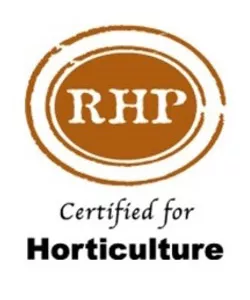
The Coco will not have any plant important insect, or insect that only feeds plant material as all the material used is new having never had any plant associated with it other than the original coco that is now around 1.5 to 2 years old. The coco is certified to RHP Horticultural grade which means it was packaged to a written set of protocols and certifications for cleanliness, not sterility.
While RHP guarantees a cleanliness standard for packaging, a bunch of testing is done on every batch, sometimes more than once per batch for many other things. Test for such things as fertility, pH, structure, and heavy metals are performed per batch, by CANNA and by independent laboratories, then repeated at random on a quarterly basis.
Additional tests are performed across the year for many of the human pathogens such as E. coli. These are monitored closely at the plant as well as in the field. These are not required tests to sell the product, but at CANNA we find it important so we know what we are selling. Which is also the reason why we add a specific batch code to the bags, so we can trace back every step in the process eventually.
In the end, not only is it impossible to keep organisms from growing in a biologically active medium, it is also not necessary for the final product harvested, unless it is a crop that is produced inside the medium allowing direct contact with the medium. It is all about the produce. If it is clean, then it is green. Cultivators will have bigger issues with simple molds than anything growing in the medium. And, if it does show up on the produce, there is no way it could be tied to the medium used. Commercial producers often need to work on their protocols for handling, harvest, cleaning, storage and everything else much more than they need to worry about a mediums sterility, only its physical and chemical properties.
Most important, from any good grower's point of view: consistency. A grower can adapt and overcome when working with different mediums, and it is those mediums that vary in their physical and chemical properties that make it hardest to achieve year over year results that are successful. CANNA COCO is, and will remain, the most consistent medium on the market. When 2 bags of CANNA COCO are opened up 5 years or more apart, the quality and characteristics of the 2 bags will be the same. And that says a bunch.

